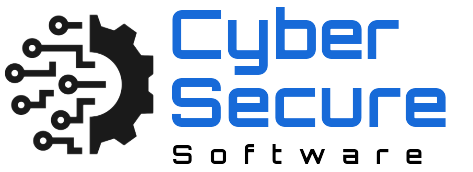Keeping up with the changing threat landscape and implementing best in class security practices!
Types of common malware and attack vectors typically seen:
- 1. Ransomware: This type of malware encrypts files and then demands payment to reverse the encryption. Such are the cases of Wanna Cry and Crypto locker.
- 2. Trojan Horses: The software pretends to be legitimate and can create backdoors for other malware. Some examples of these are Zeus and Emoted.
- 3. Worms: Self-replicating malware that can spread through networks. The ILOVEYOU worm is a historical case.
- 4. Adware: these programs display unwanted ads, often negatively affecting end user experience and privacy. Some can even track user behavior.
- 5. Spyware: Harvests user data without permission and may result in identity theft. Keyloggers are a common form.
- 6. Rootkits: Seek to obtain access and cover the existence of other malware, are often operating at machine-level.
- 7. Phishing: If you are already aware of what a computer virus is, then you may want to learn what a virus is that is not a virus
Of course, to stave off these threats, make good use of updated antivirus software, back up data on a regular basis and browse safely as a general rule.
- 8. Bots and Botnets: Infected devices controlled remotely to perform tasks, usually in the form of a DDoS attack or as a command-and-control agent to spread more malware.
- 9. File-less Malware: It does not store files but works in memory, making the detection process strenuous and cumbersome. It is frequently also an exploit of system vulnerabilities.
- 10. Keyloggers: Keystroke-logging spyware that records keystrokes to pick up sensitive information; typically passwords.
- 11. Crypto jacking: The unauthorized use of someone else’s computer to mine cryptocurrency, in many cases without the user’s knowledge.
- 12. Gaming : A slang term used to describe every online gaming activity from playing board games like Chess and Monopoly to action games.
- 13. Malvertising: A method that allows attackers to inject malicious code into legitimate online ad serving networks.
- 14. Social Engineering Deceptive practices employed to manipulate users into sharing sensitive information or performing actions that are detrimental to the organization.
- 15. Remote Access Trojans (RATs): Enable attackers to remotely control a system, often for espionage or data theft.
To protect against such threats, it is vital to ensure systems are up to date, utilize strong passwords, be wary of email attachments and links, and use robust security solutions.”
Certainly! Other types of malware and cyber threats to understand include:
- 16. Pharming: It deceptively redistributes users from legal sites to phishing sites without the user’s knowledge, most of the time to steal credentials.
- 17. DNS Spoofing: Changes the DNS settings, directing the user to fake sites that steal sensitive data.
- 18. Firmware Malware: Specifically targets the firmware of devices that is complicated to remove as it can survive reboots and reinstallations.
- 19. Credential Stuffing: Takes stolen usernames and passwords from one breach and uses them to log into accounts on other services, cashing in on users’ tendency to recycle credentials.
- 20. USB Malware: Transmitted via tainted USB drives, which can introduce malware to any PC the drive is plugged into.
- 21. ATM Skimmers: Devices placed on ATMs that read cards.
- 22. Bluetooth Hacking: Some attack that is also known for taking advantage of the security vulnerabilities in Bluetooth connections to gain access to devices that users are connected with.
- 24. Internet of Things (IoT) Vulnerabilities: Malware designed to attack Internet of Things (IoT) devices, many of which have poor security.
Being aware of these threats and taking robust cybersecurity precautions — employing firewalls, activating multi-factor authentication, tracking accounts regularly — can dramatically mitigate risk.
- 25. Seasonal Threats: Malware that preys on events or times of year, such as holiday-themed phishing scams.
- 26. Backdoor Trojans: Establish a concealed access route into the system that enables attackers to exploit it at a later time while circumventing normal authentication processes.
- 27. Bootkits: A rootkit that embeds itself in the boot process of a computer, enabling it to run before the operating system and evade detection.
- 28. Fake Antivirus Software: Software that pretends to find viruses but is merely a front for more malware installation.
- 29. DNS Spoofing: This method redirects users from real websites to fake or malicious ones by corrupting DNS resolver cache.
- 30. Mobile Malware: This type of malware is specialized for mobile devices like smartphones and includes types such as trojans, adware, and ransomware.
- 31. Wiper Malware: Data Destroying rather than data stealers. It is used for Sabotage.
- 32. USB-based Malware: Spreads using infected USB drivers since users trust their removable media.
- 33. Credential Stuffing: An automated method for logging into accounts that employs a stolen username/password pair, normally obtained from prior data leaks.
- 34. Insider Threats: Malicious or negligent behavior of employees or contractors that puts security at risk.
It’s important to protect your systems and data by staying up to date with the most recent threats and using strong levels of security. Practicing training users to spot and defend against threats regularly can lead to a significant lowering of threats.
